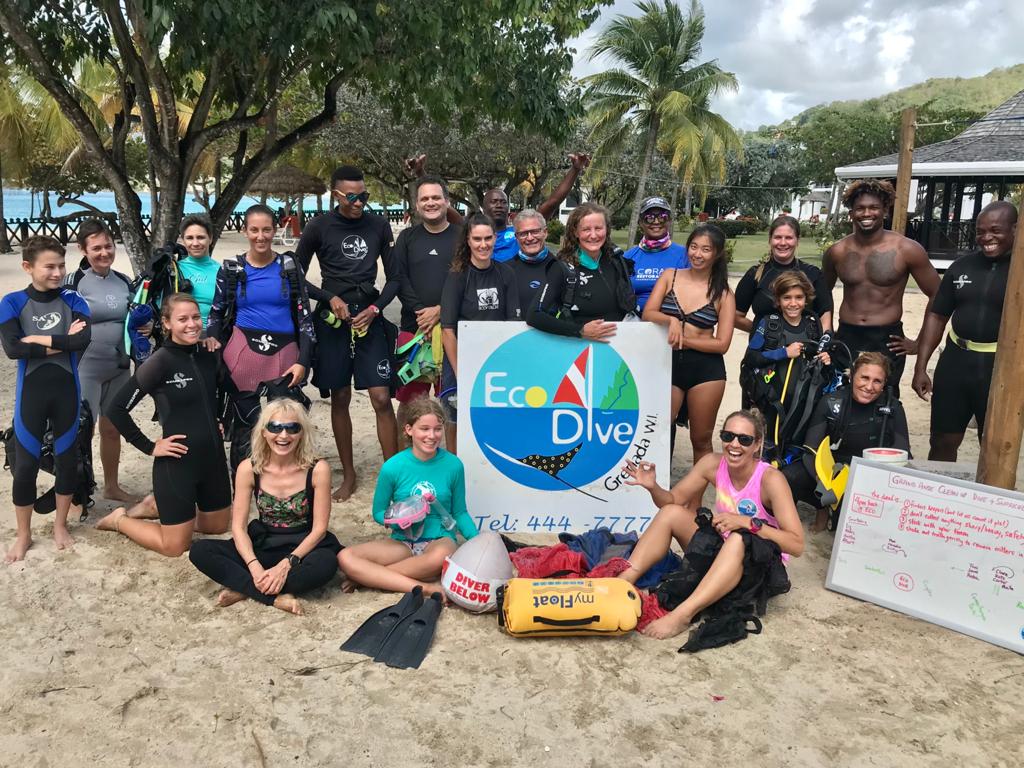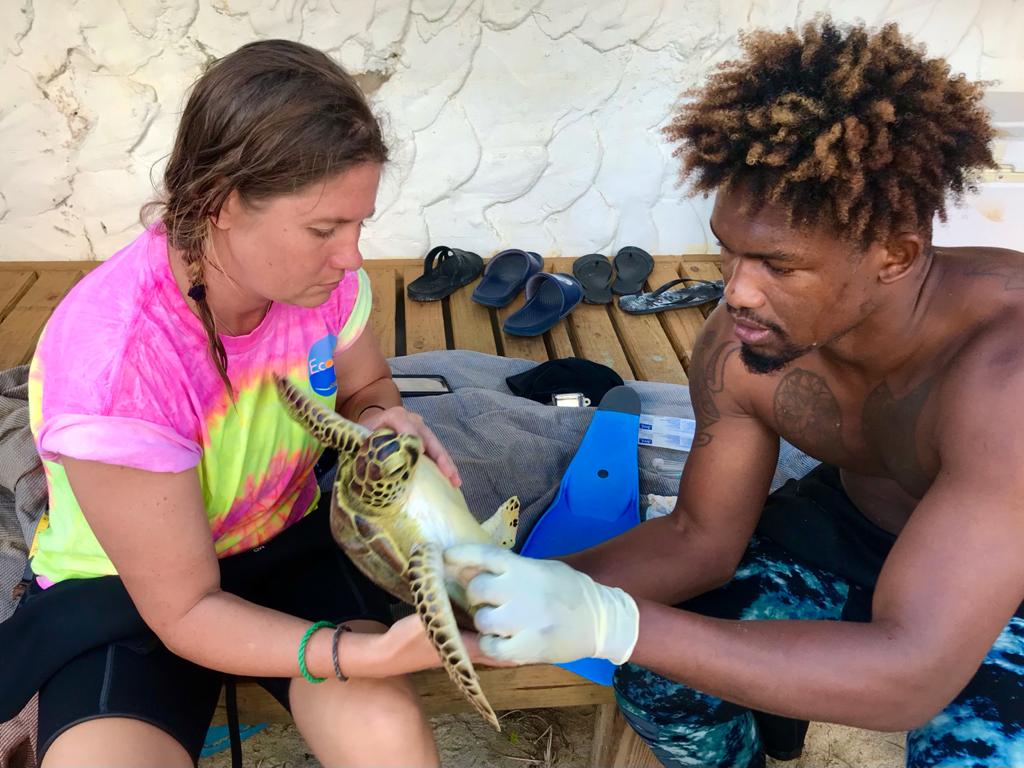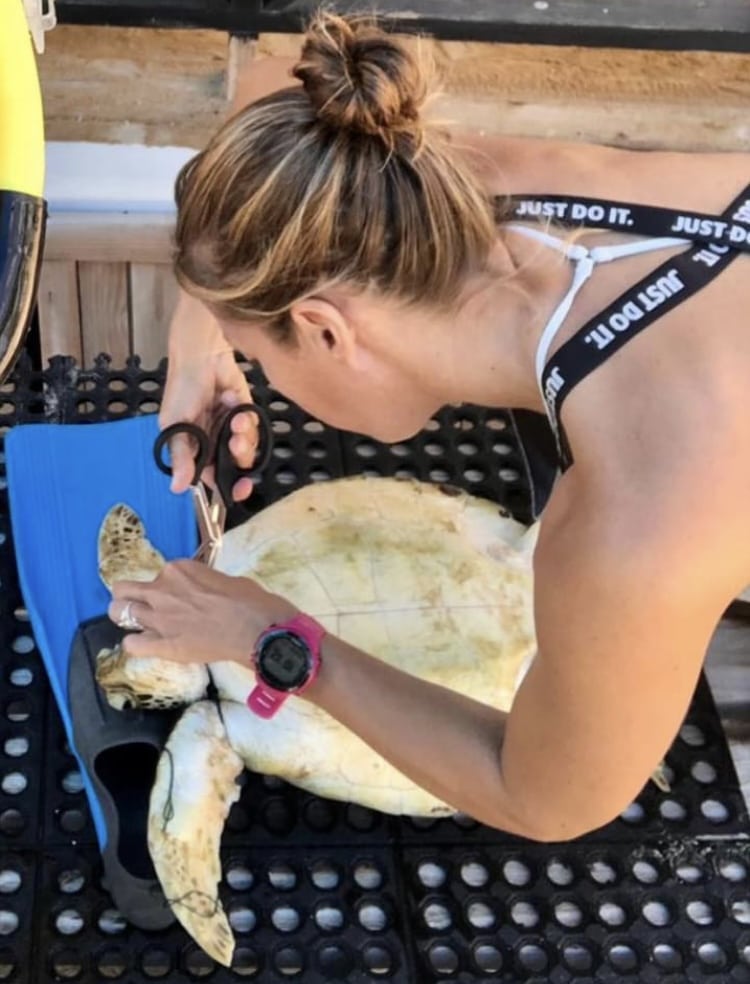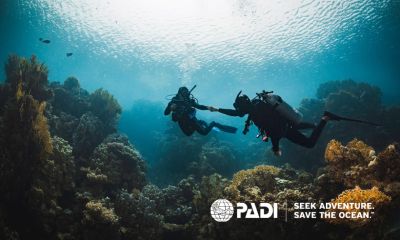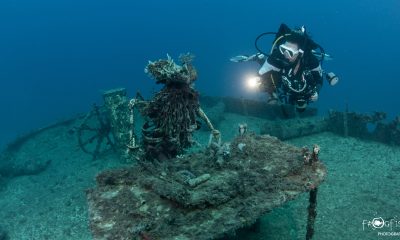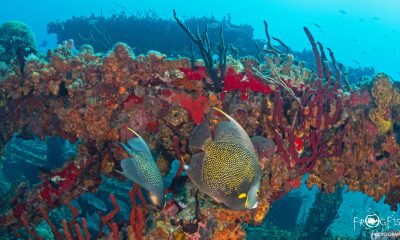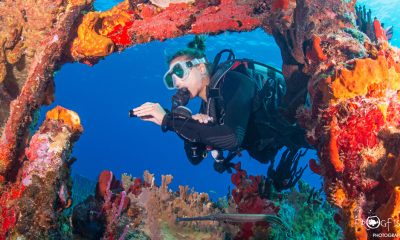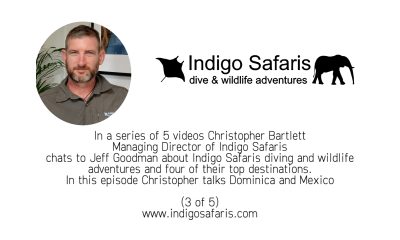Blogs
Sea Turtles rescued in Grenada during clean up
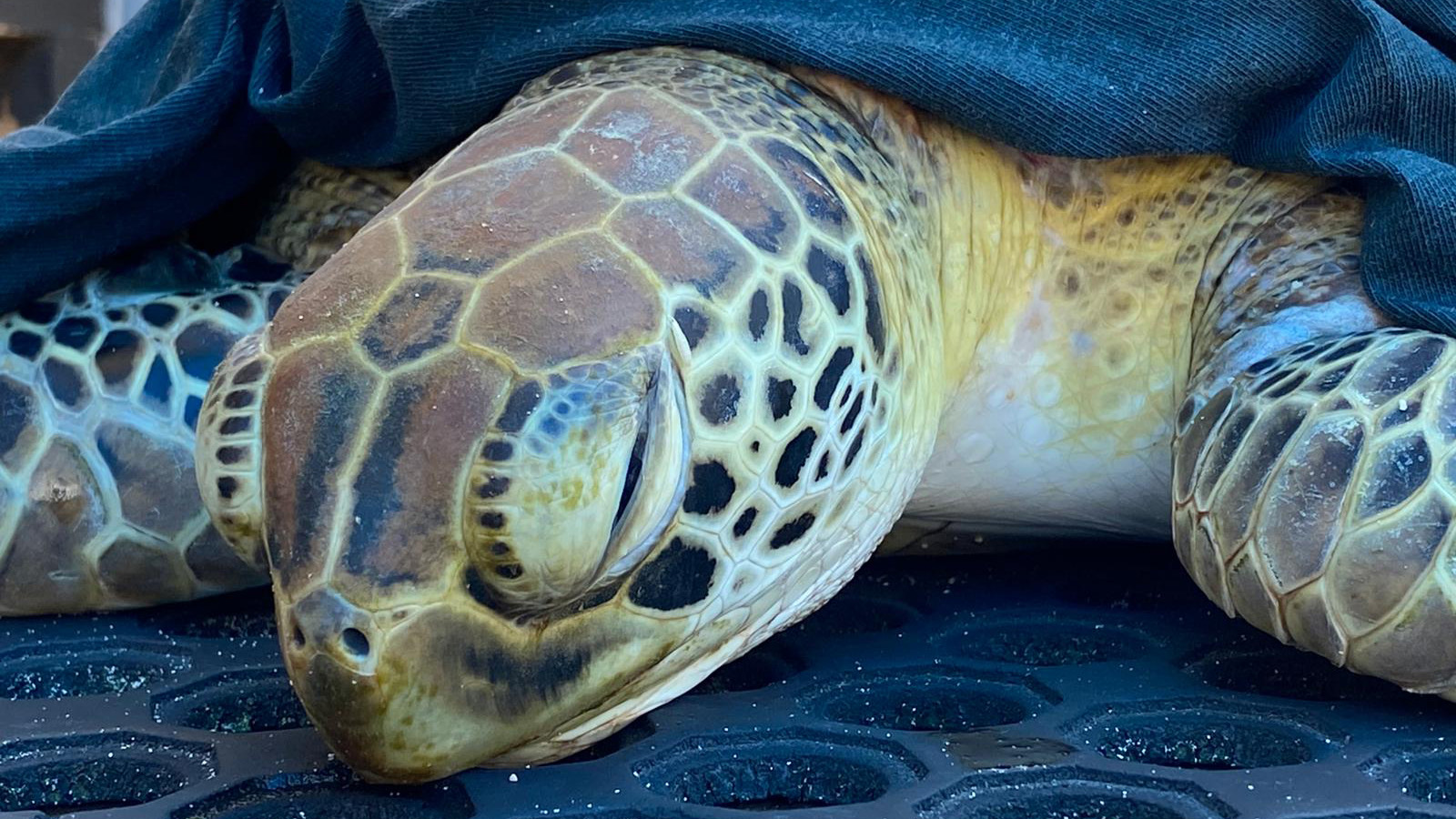
On Feb 20th twenty volunteers gathered for one of Eco Dive’s regular monthly clean up dives off Grand Anse Beach in Grenada, a shore dive site adopted by Eco Dive under the Project AWARE Adopt a Dive Site programme. With a mix of snorkelers, freedivers and scuba divers, including junior divers, the squad set out to find and recover as much ‘treasure’ as possible from the patch reef, sand patches and extensive seagrass beds skirting the beautiful 2 mile beach.
With a plan in place to cover as much of the beach as possible and focus on the high risk areas (storm drains, public jetty, public park accesses) the group set off. Divers were dropped by the dive boat up the beach in teams, a meeting time was set, mesh bags were issued and the they were off. Two more teams one of divers and a snorkel/freediving team headed off from the dive shop to cover the home base and down current zone of the beach.
With the clean-up underway the beach station was set up for sorting, counting and weighing of the haul. The debris gets sorted and the data recorded with Project AWARE to help track global trash trends and local hot spots and events. The first team back to the beach however was the freediving team, and they brought a VIP. Found tangled in kite line was a juvenile Green Sea Turtle. These juvenile turtles love this seagrass habitat off Grand Anse Beach and there is a rotating population of juveniles that join snorkelers regularly.
The team at Eco Dive are familiar with these endangered babies and work closely with Ocean Spirits, a local conservation organization, to tag and monitor these juveniles in the hopes of gaining more information on their movements, risks, health and a better estimate on the size of the local population. For anyone who has worked with a sea turtle project before you would know that catching a wild turtle is a stealth act of athleticism, especially juvenile Green’s who are deceptively quick when motivated. To see our snorkel team carrying a turtle (on a non-tagging day) had to mean something was amiss.
Sure enough timing on this clean up dive turned out to be serendipitous. This little turtle, later named Cora, was alive but exhausted. She had managed to tangle herself in a kite line and struggled so much that the line that immobilized her fore-flippers and dug cuts into her skin. Unable to reach the surface this little baby was struggling for her life, so she provided no resistance to rescuers as they freed her up to the surface and back to the dive shop for some TLC.
The right place right time nature of the day continued… with Ocean Spirits’ Director, Chair and veterinarian was on the clean up dive already, there were a further 5 veterinarians also on the clean up dive (it turns out vets love to help save the ocean and make great clean up dive buddies!) so little Cora was in good hands. Cora received some antibiotics to help prevent infection in her cuts, some fluids to help her relax and a safe place to stay for 4 days before her release safely back into the sea. Normally turtles would be tagged at the base of their fore-flippers to help identify repeat individuals and track growth etc however with the tissue damage and bruising Cora suffered under her fins on this occasion she was not tagged but marked with her name and well wishes on her shell and set free.
As for the trash clean-up dive the team successfully removed more than 38 kg of trash from the sea including 2 kites, 10+ kite lines, fishing line and lots of plastics and clothing. Juvenile octopus, mantis shrimp, cleaner shrimp, crabs, grunts, wrasse and gobies were found within the trash treasures and were released back to the sea by the sorting volunteers. Cora definitely stole the show and had all of the volunteers extra grateful for having made the effort to come out and join the clean up. More kite line remained in the sea however as some run for 100’s of meters. A plan was made by some particularly keen volunteers to come back during the week and target some of the known areas where kite line remained, the Eco Dive crew also committed to daily clean up dives for the week to get these lines out of the sea.
As the working week started, Eco Dive were back to their daily routine and booked a clean up dive with just 4 regulars for the next Friday morning. The divers were out for an hour and one of the dive teams found another turtle tangled. A different turtle, and a different kite line, but a very similar scenario. Kite line in the spring windy season is a known risk item that is found on the clean ups but a tangled turtle has never been found before until this week, and now they had rescued two! A call went out to Ocean Spirits saying “you’ll never believe me but ..” and the dive team got to work freeing the second turtle of the week from a fore-flipper straight jacket caused by kite line.
This juvenile green sea turtle, slightly bigger than Cora, was named Aurelia, after Eco Dive’s Junior Open Water Diver who is an adamant clean up diver and has been on a trash mission for weeks. Aurelia weighted in at just over 7 kg and was exhausted but safe.
Eco Dive’s tally for their clean up dives for the week: they removed over 50 kg of lines and plastic from the sea and rescued two baby turtles. A pretty good week all round!
For more information, or to join a clean up day, with Eco Dive Grenada visit their website by clicking here. You can also follow them on Facebook and Instagram.
Blogs
BVI Wreck Week – Diving (Part 3)

![]() BVI Wreck Week allowed us to dive several of the wrecks the BVI has to offer, as well as sampling some of the best reef sites too. Our previous blog focused on the wreck of the RMS Rhone, so in this one we will try to give you a taste of the rest of the diving on offer.
BVI Wreck Week allowed us to dive several of the wrecks the BVI has to offer, as well as sampling some of the best reef sites too. Our previous blog focused on the wreck of the RMS Rhone, so in this one we will try to give you a taste of the rest of the diving on offer.
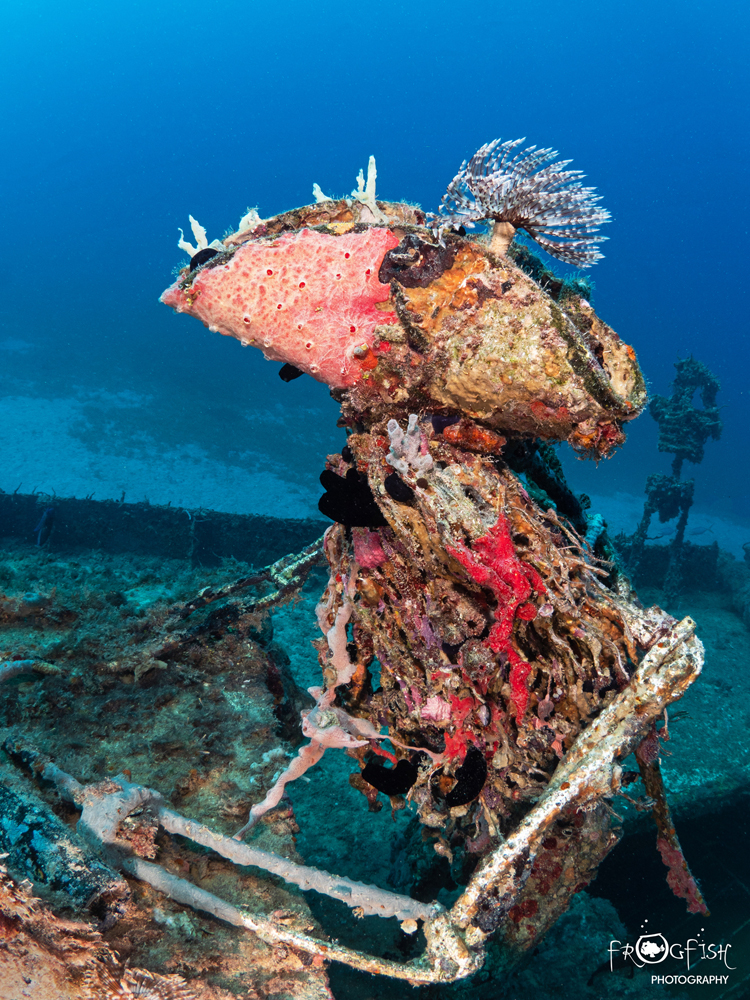
And there is a great deal of wonderful diving to tell you about. Our first day of diving did not offer the best visibility due to heavy rain earlier in the week. However, we were taken to a rugged dive site that had Caribbean and Lemon Sharks swimming all around us. If we had been able to see the usual 20m+ I am sure we would have been able to talk of dozens of sharks on the site.
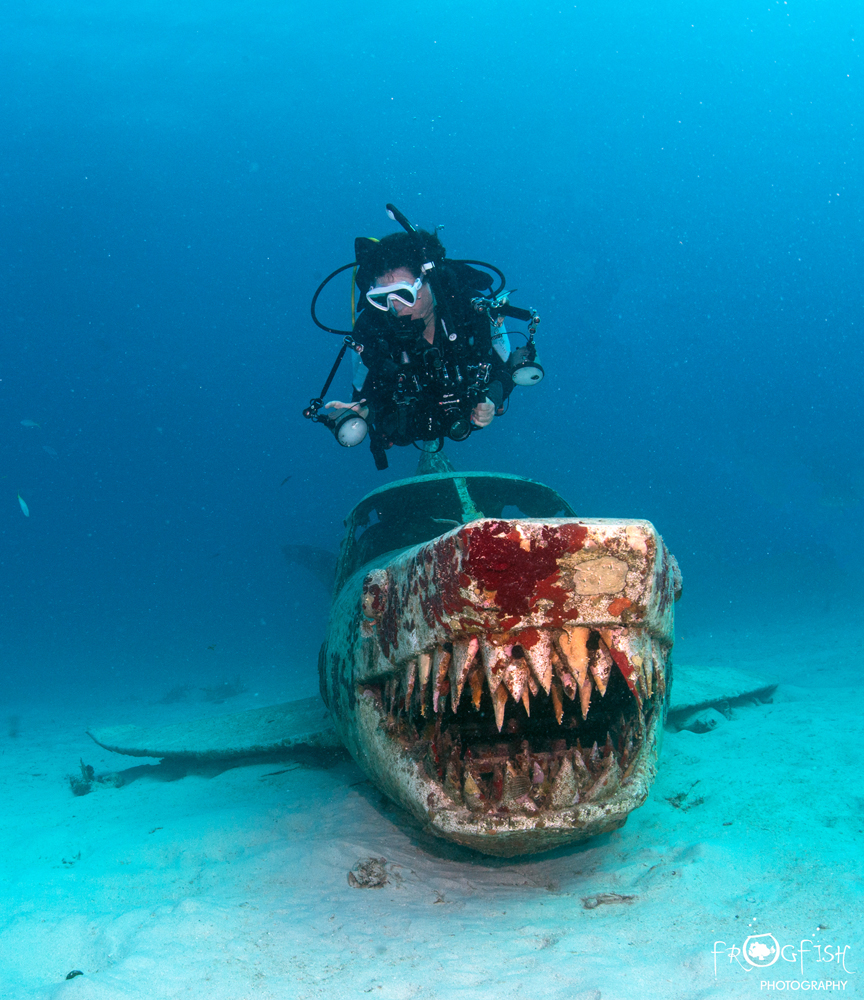
The BVI has plenty of artificial reefs, created from wrecks deliberately sunk. A couple of these are artistic creations from Beyond the Reef. The Willy T is a pirate themed party boat sunk in shallow water that now has skeletons of pirates duelling on the deck and going about their dastardly ways. It is a lot of fun and once you have had your fill, you can head up onto the shallow reef. Shark-plano is a series of three planes that were damaged in a hurricane, that have been turned into shark species and sunk. Both these sites are perfect for the diver that loves a bit of Instagram appeal!
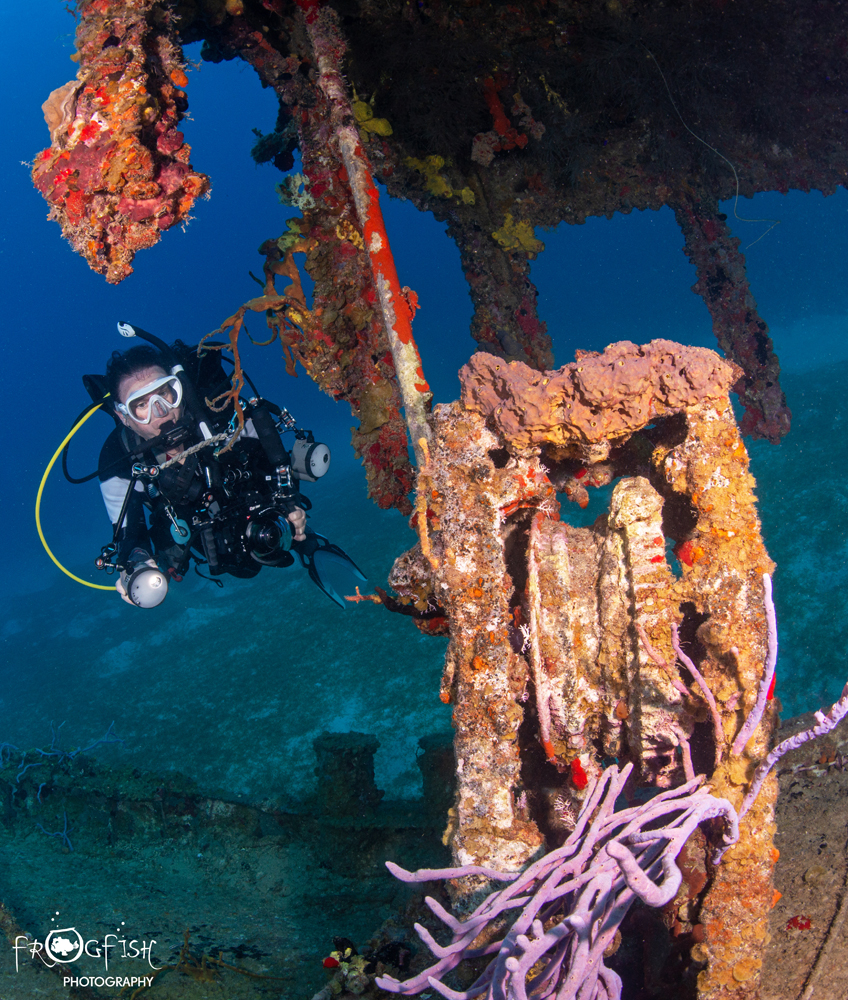
Wreck Alley has a series of three boats sunk to create a super dive site perfectly aligned for a single dive where you can explore them all. Moray eels can be seen free swimming along the decks, huge stingrays back the sandy seabed their home. Turtles cruise past as you make your way around and then up onto the reef for your safety stop.
On every dive we did we saw sharks which absolutely delighted us. The local dive shops seem to be particularly engaged in conserving the reefs, taking part in coral reef restoration, lionfish hunting, cleanups and logging their sightings. We were filled with positivity at the end of each day.
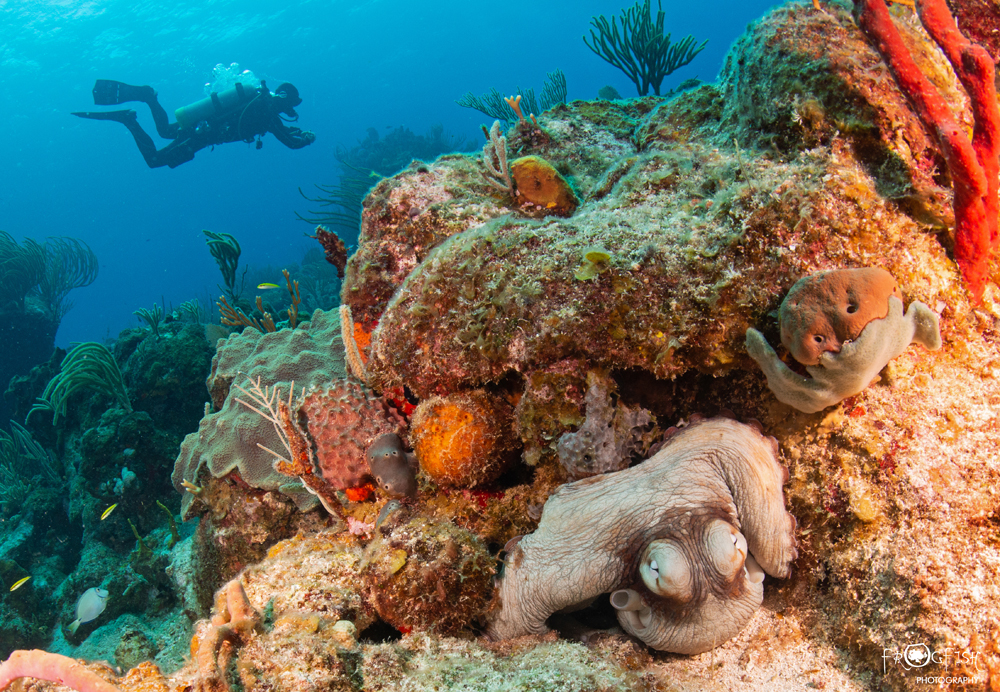
We hope that we can return to do it all again at BVI Wreck Week 2024!
Watch out for our full feature on BVI Wreck Week in the next issue of Dive Travel Adventures coming out in July.
For more information about BVI Wreck Week 2024 visit their website here.
Nick and Caroline were hosted by BVI Wreck Week
The Moorings provided their yacht for the week
Host Dive Centres:
Blogs
BVI Wreck Week – Diving the RMS Rhone (Part 2)
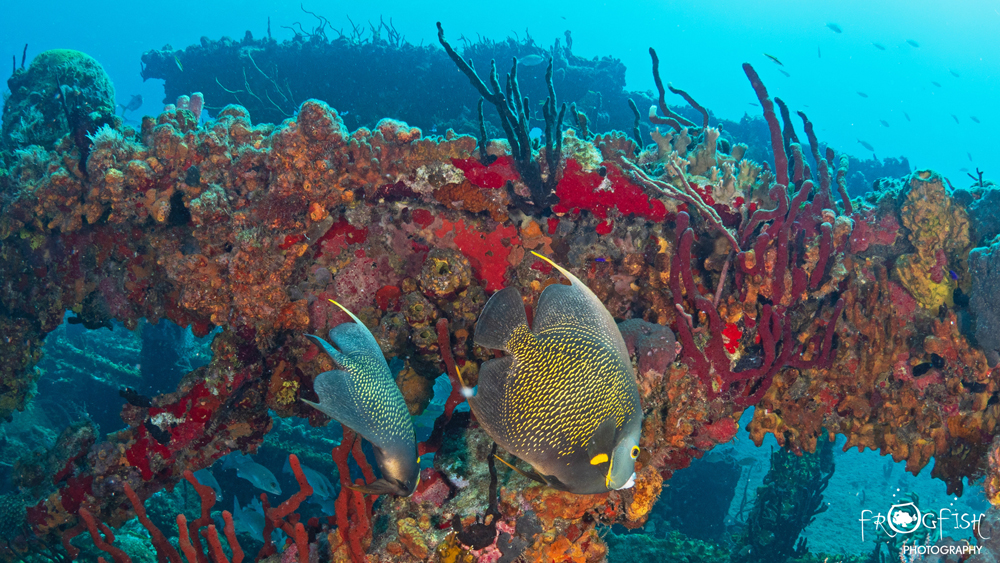
![]() You cannot talk about BVI Wreck Week, or diving in the British Virgin Islands, without spending some time on the jewel in their crown of wreck diving – the RMS Rhone. So this blog is going to be dedicated to a wreck dive that we were happy to dive three times on our trip and would have been happy to dive every day!
You cannot talk about BVI Wreck Week, or diving in the British Virgin Islands, without spending some time on the jewel in their crown of wreck diving – the RMS Rhone. So this blog is going to be dedicated to a wreck dive that we were happy to dive three times on our trip and would have been happy to dive every day!
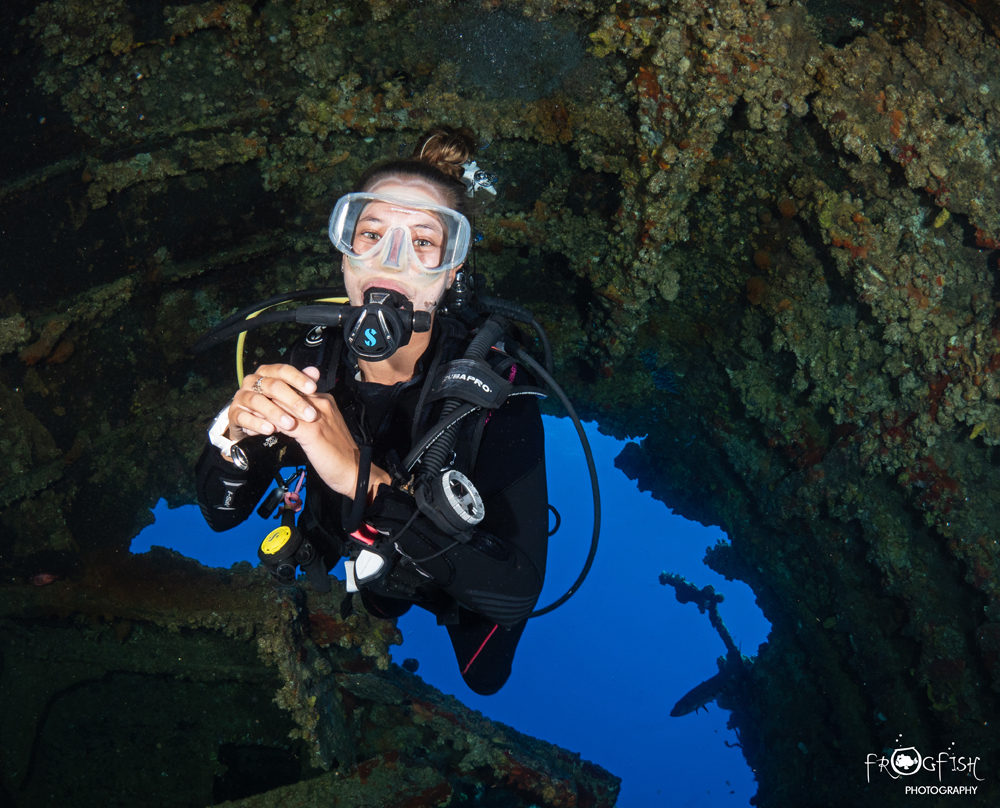
The RMS Rhone was a UK Royal Mail Ship wrecked off the coast of Salt Island on 29 October 1867 in a deadly hurricane. Now it is the most popular dive site in the region. The dive briefings for the site are filled with stories of the fate of the ship and some eye-opening tales since.
The wreck and surrounding area become the British Virgin Island’s first national marine park in 1980. Many of the underwater segments of the 1977 thriller The Deep were filmed on the Rhone, requiring actors Jacqueline Bisset, Nick Nolte and Robert Shaw to learn how to scuba dive.
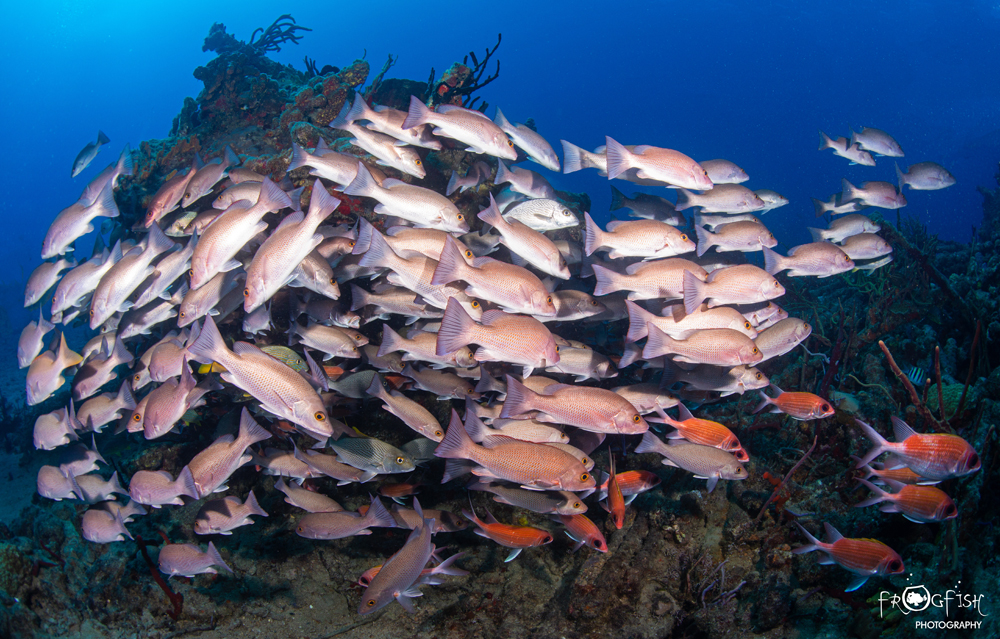
You’ll need at least two dives to fully experience the RMS Rhone. The ship split apart on sinking and the bow drifted just a little before sinking. The two halves are about 100 feet apart with the bow sitting in deeper water (around 25 meters / 80ft). So you are best to explore the bow fully on a single dive and then head to the stern on your second dive.
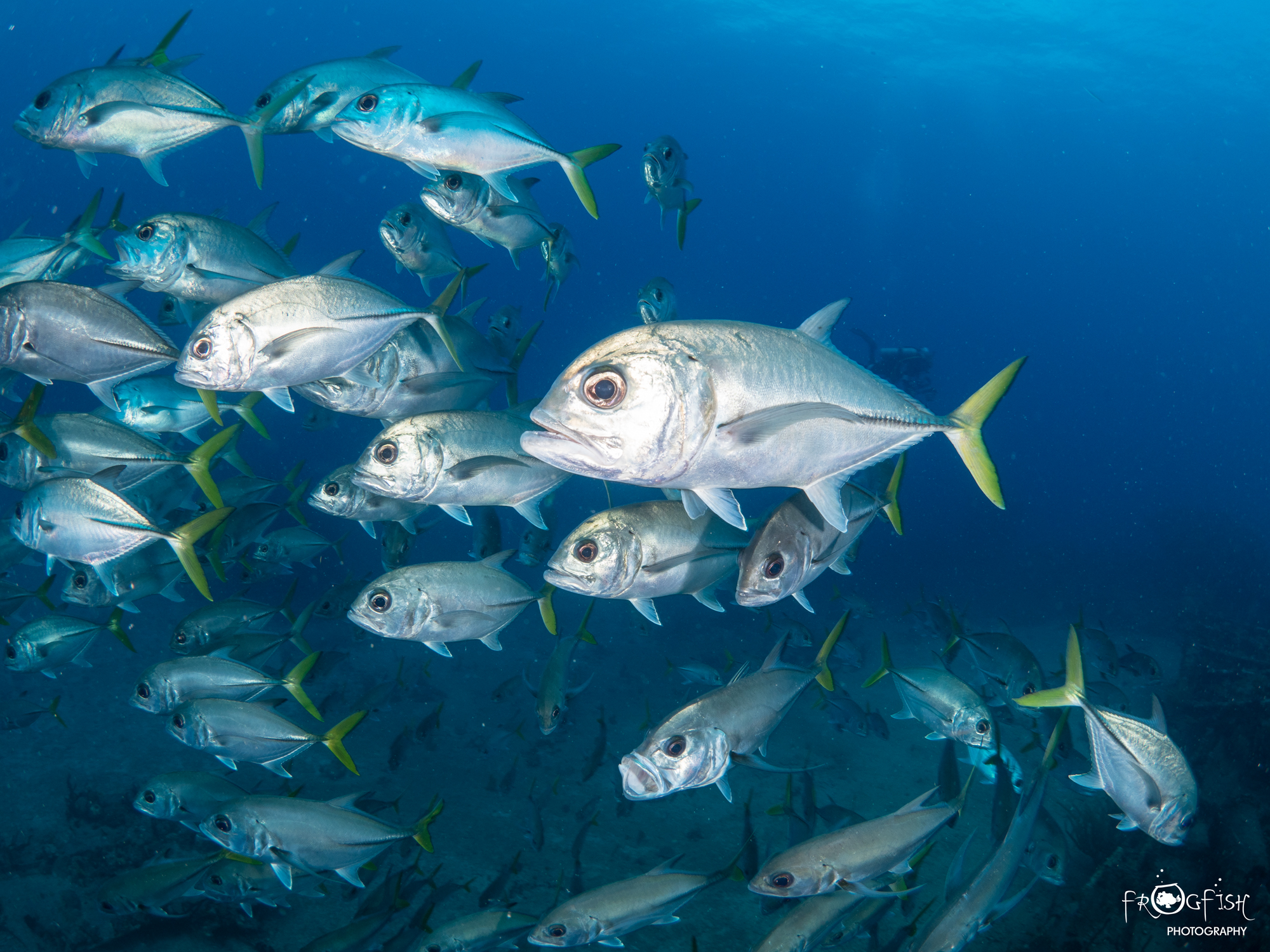
Whilst the history, artifacts and stories from the movies are absorbing, as soon as we got underwater to dive her, it was the incredible marine life that had us hooked. Two seahorses had made their home right at the bow of the wreck. Stingrays lay buried in the sandy sea bed. The structure is covered in colourful corals and sponges. Schools of fish occupy the overhangs and metal remains. We saw sharks on all three dives and were treated to a huge spotted eagle ray gliding over the wreck. Lobsters waved their antennae at us from every crevice. Life is everywhere you look on this dive.
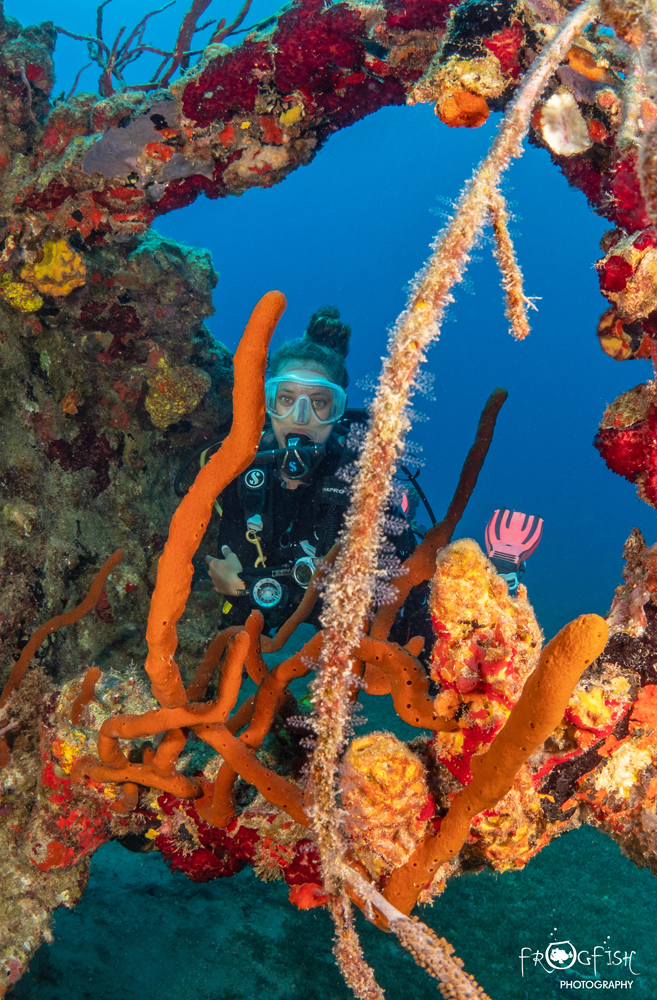
The marine park status has certainly ensured that this is one of the best wrecks we have dived in the Caribbean. Whilst we did not get the chance to do this – we bet it would make an awesome night dive.
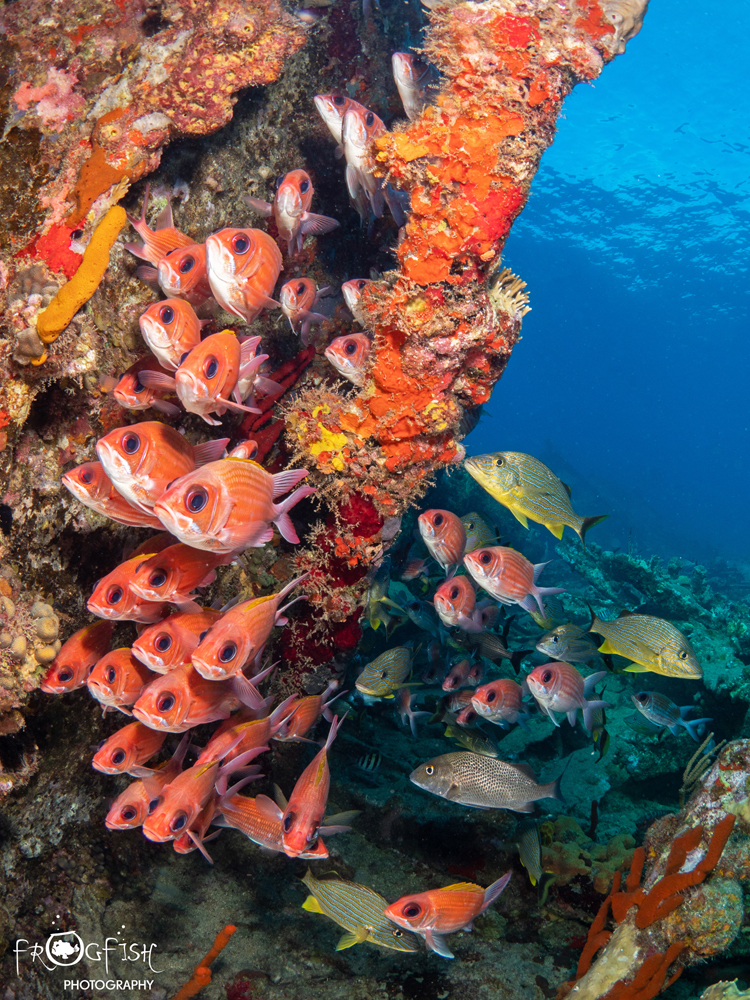
Check out our next blog to find out more about the diving and watch out for our full feature in the next edition of Dive Travel Adventures Magazine in July!
For more information about BVI Wreck Week 2024 visit their website here.
Nick and Caroline were hosted by BVI Wreck Week
The Moorings provided their yacht for the week
Host Dive Centres:


